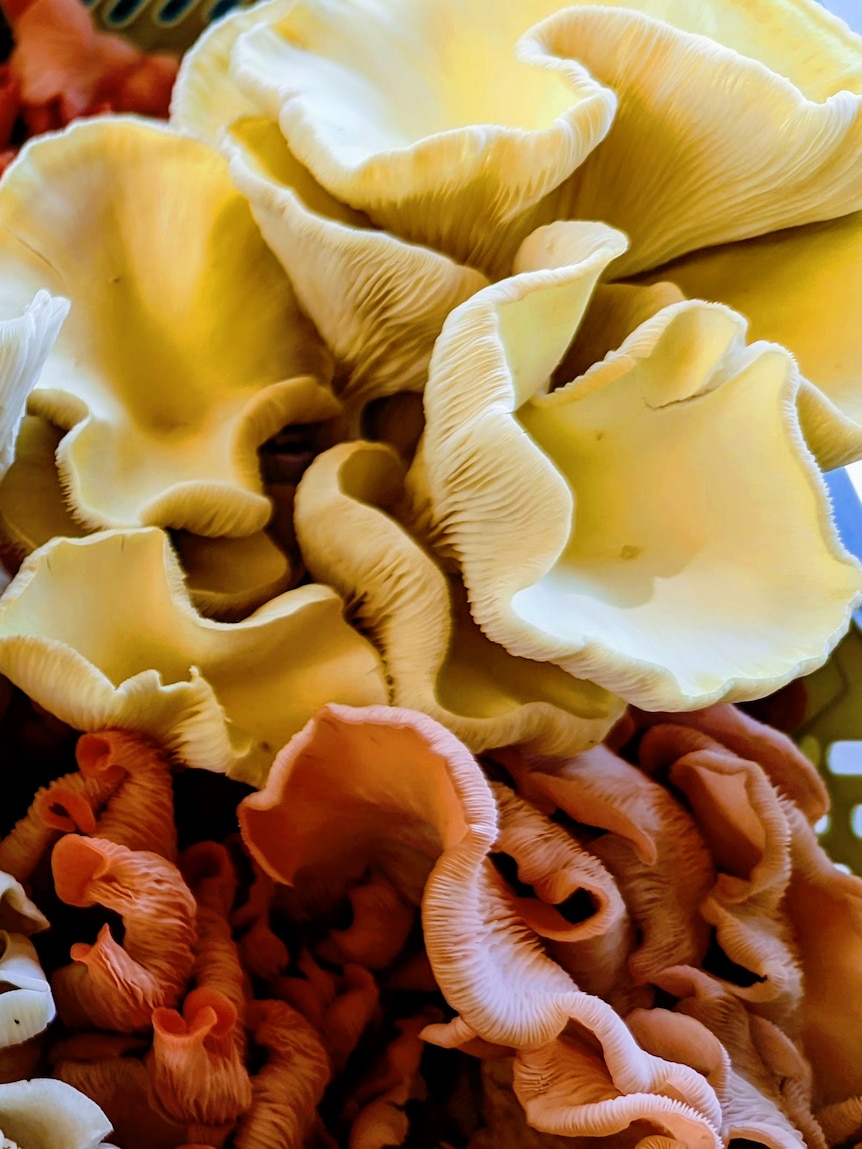As temperatures drop and wet weather sets in, fungi enthusiasts are braving the elements searching for rare finds.
In SA’s South East, despite a late start to the fungi season, people are grabbing their cameras and heading out to see the region’s vast variety of species, including the famous ghost mushrooms.
Feresh Pizarro, who runs a fungi-tour business near Robe, said the region was “paradise” for fungi.
“I have a group of about 10 of us that are mushroom obsessed in the South East, and we feel like we’re the luckiest people on earth,” she said.
“There’s such little information and research and studies on mushrooms … that you might come across a new species.
“I think the South East should be the capital of mushrooms here in Australia, or at least in South Australia.”
Interest high, despite incidents
Feresh’s tours teach people how to identify wild edible mushrooms growing locally, one of which costs up to $200 per kilogram to buy in shops.
“People don’t know about it because they’re scared of eating it, and they should be, because there are so many poisonous mushrooms.
“But there are so many poisonous plants too, and we’re not scared about eating a lettuce.
“It’s all about what we know and the information we have.”
She said interest in fungi was growing, despite high-profile incidents of suspected mushroom poisoning in Ballarat and Leongatha in the past year.
“It’s been really drastic, the increase, not just in foraging but growing your own mushrooms and learning about the medicinal impacts,” she said.
“It’s been really beautiful to see how people just get blown away by all the information.
“There have been a few stories in the media that have scared people, so there was a little bit of a drop for a while, but that didn’t last too long.”
While interest bounced back, Feresh said the suspected poisoning incidents resulted in a significant impact on her business.
“I actually could not get my insurance so I had to change my foraging tours to be mushroom identification tours [and] I can’t actually cook anymore in my tours,” she said.
Feresh said that while she still encouraged people to go looking for fungi, she urged extreme caution when it came to foraging.
“If you want to eat any, you really need to know what you’re looking at,” she said.
And she warned that asking for advice on Facebook was not the way to determine if a mushroom was safe to eat or not.
Word ‘spreading’ about fungi
Further south in the region, Millicent-based photographer Steve Chapple runs his own tours showing people how to get the best pictures of fungi.
“I started finding them and got a bit excited about them, like everyone else does,” he said.
“People are excited about seeing so much difference [in varieties] that they can’t get in their own areas.”
Steve said interest in learning about different fungi varieties was growing across the world.
“I’m doing the tours full time and I’m booked out ahead,” he said.
“The word’s spreading on fungi … the medicinal benefits and other things, and people want to know more about the ecology.
“I went out with a small group who just wanted to see different colours, and in a four-hour stint I was able to take them to 19 different species of fungi.
“Some of them probably have these in their area, but they don’t know how to look for them and they just walk past them.”
Fungi festival plans
Steve and Feresh are hoping to organise the first fungi festival in the state, to be based in Millicent next June.
“There are others held on the eastern seaboard … and we think the opportunity to develop one specifically for this region is quite huge,” Steve said.
“There’s a need here for something festival-wise in our region that’s in those cooler winter months.
“Obviously, the fungi’s a real attraction.”
He said the Limestone Coast was a “hot spot” for fungi and that could benefit tourism in the region overall.
But as fungi is only prevalent for about two months of the year, he said tourism would need to highlight other local attractions.
“What I think we need to do is make sure that all visitors to this region understand that there’s other opportunities while they’re here,” he said.
Get our local newsletter, delivered free each Friday




